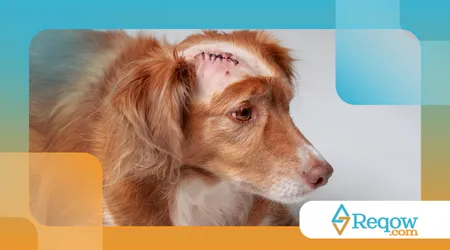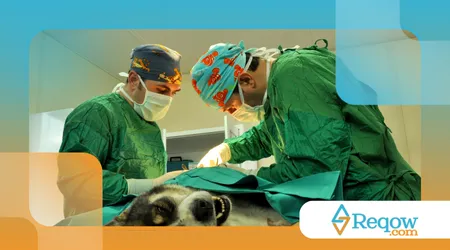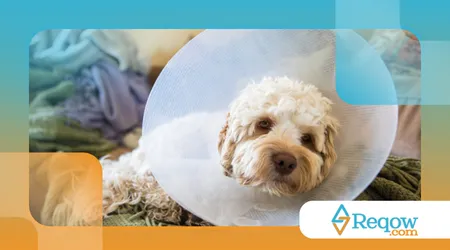Tips to help your dog recover from surgery

Helping your dog recover from surgeryA dog's recovery journey after surgery requires dedication, care, and knowledge from its owners.
Advertisements
This post-operative period is crucial to ensure your best friend's well-being and rapid return to full health.
In other words, knowing exactly how to proceed minimizes risks and optimizes healing.
The owner's natural anxiety can be transformed into positive action with the right plan. The success of the surgery inevitably depends on home care.
This detailed guide offers practical, up-to-date strategies to help you create the best healing environment. After all, your pet's health is your top priority.
Advertisements
How can environmental preparation influence my dog's recovery?
Creating a safe haven is the essential first step in the process of help the dog recover from surgery. The resting place should be quiet, away from the house traffic.
Therefore, a quiet, welcoming space reduces your pet's stress and agitation. Use comfortable beds to ensure your pet doesn't have to jump to lie down.
Slippery floors pose a real risk of accidents and falls. Cover walkways with non-slip mats, temporarily if necessary.
Make sure the room temperature is comfortable and stable. Avoid cold drafts or excessive heat in the sleeping area.
Temporary isolation may be necessary, especially in homes with other animals. Other pets may inadvertently interfere with healing.
Keep fresh water and food bowls accessible without straining your dog. Hydration is vital for a healthy metabolism.
What are the essential care measures for surgical wounds and how can I help my dog recover from surgery?
Wound management is one of the biggest post-surgical concerns. Strictly follow the veterinarian's instructions.
Improper cleaning or excessive touching can introduce bacteria into the incision. Never apply ointments or products without a prescription.
Monitor the wound daily for signs of infection. Severe redness, swelling, heat, or purulent discharge require immediate veterinary attention.
The use of an Elizabethan collar (cone) is often non-negotiable to prevent licking. Canine saliva contains bacteria that delay healing and can cause infection.
Read more: Care to avoid dehydration in puppies
Licking or biting the stitches is a serious mistake that can undo the suture. Helping your dog recover from surgery involves patience with the use of the cone.
A study published in the Journal of the American Veterinary Medical Association (JAVMA), in 2023, reinforces the importance of multimodal pain management.
Pain, if not controlled, delays healing and reduces quality of life.
The prescribed analgesic protocol must be administered at the correct times, without fail. Pain is subjective, but signs such as moaning, restlessness, or lack of appetite indicate distress.
Often, medication isn't just for comfort, it's also anti-inflammatory. Excessive inflammation disrupts the natural tissue repair process.

Why is exercise restriction crucial and how to apply it safely?
Restricting movement is perhaps the most difficult, yet crucial, part of the process. Physical exertion can strain the suture and cause dehiscence (opening).
So, to help the dog recover from surgery, he should avoid running, jumping, or climbing stairs. The risk of breaking internal or external stitches is very high.
Think of healing as drying a very strong glue. Any sudden movement before it dries completely can ruin the work.
Walks should be extremely short and only for physiological needs. Always use a leash and maintain a slow and controlled pace.
Look how interesting: When hair loss is more than just a change of season
In cases of complex orthopedic surgeries, complete cage rest is mandatory. Adapt gradually so the patient doesn't associate the cage with punishment.
Boredom can lead to restlessness, which compromises the dog's necessary rest. Offer interactive toys or chew bones to keep him occupied while lying down.
Therefore, a Labrador owner, after knee surgery, adapted a pet stroller for short walks.
This allowed the dog to participate in brief periods of outdoor activity without putting weight on the operated paw.
How do diet and physical therapy help dogs return to normal to help them recover from surgery?
On the other hand, nutrition plays an irreplaceable supportive role in recovery. The body needs more energy and specific nutrients to heal.
A high-calorie, high-protein recovery diet is often recommended. Protein is the essential building block for new tissue formation.
Consult your veterinarian about the need for specific supplements, such as omega-3s or amino acids. These can help reduce systemic inflammation.
More information: What to look for when buying a new bed for your dog
After abdominal surgery, a Poodle's veterinarian suggested offering small portions of food more often throughout the day.
This facilitated digestion and minimized post-anesthesia nausea, ensuring caloric intake.
Physical therapy, when recommended, accelerates the return of motor function. It is particularly important in orthopedic and neurological procedures.
Your veterinarian or physical therapist will recommend the correct and safe rehabilitation exercises. Never begin physical therapy without detailed professional guidance.
In Brazil, approximately 30% of veterinary surgeries involve orthopedic or soft tissue procedures with potential benefits for rehabilitation.
(Estimate based on data from specialized clinics in the country).
It's clear that post-operative care is an extension of the procedure itself. How well you prepared for help the dog recover from surgery will determine the ultimate success.
| Recovery Phases and Main Focus | Estimated Duration | Primary Objective |
| Immediate Acute Phase (Post-Anesthesia) | 24 – 48 hours | Stability, Pain Control |
| Initial Phase (Wound Healing) | 3 – 14 days | Absolute Rest, Infection Prevention |
| Intermediate Phase (Rehabilitation) | 15 – 45 days | Gradual Return of Function, Physiotherapy |
| Late Phase (Full Return) | 45+ days | Return to a Full Exercise Routine |

What can I do to ensure proper veterinary follow-up after discharge?
Continuous professional monitoring is your best guarantee of safety. In other words, follow-up appointments are for monitoring healing and removing stitches.
Never attempt to remove stitches at home, even if they appear loose. A veterinary evaluation is necessary to confirm complete tissue adhesion.
Maintain open communication with the clinic, reporting any changes in behavior. Your attentiveness is an essential aid to the professional.
An apathetic dog that refuses water or vomits repeatedly requires immediate attention. Don't hesitate to call your veterinarian if any signs of worsening occur.
The journey of help the dog recover from surgery requires discipline and love. Are you ready to be the hero your four-legged friend needs?
The Tutor's Role in Recovery
The post-surgery process is a test of dedication for any responsible pet owner. Successful recovery is the reward for meticulous care.
By following the tips for restriction, pain management, and follow-up, you'll ensure the best results. Remember, the goal is complete healing and a quick return to canine happiness.
Your commitment to help the dog recover from surgery makes all the difference.
Frequently Asked Questions
Can I bathe my dog after surgery?
In most cases, bathing should not be done until the stitches are removed and the wound is completely healed, which usually takes 10 to 14 days.
Water can soften the suture and increase the risk of infection. Always follow your veterinarian's specific instructions.
How long does it take for full recovery?
Recovery time varies greatly depending on the type and complexity of the surgery.
Routine surgeries, such as castration, take about 10 to 14 days for superficial healing. Orthopedic procedures can take anywhere from 6 weeks to several months.
Is it normal for my dog to be quieter or have no appetite in the first few days?
Mild apathy and decreased appetite are common in the first 24 to 48 hours due to the effects of anesthesia and initial pain.
However, if the lack of appetite persists for more than two days or if the animal is very prostrate, it is crucial to contact the veterinarian.
++ Care before and after surgery in dogs
++ How to care for your pet post-surgery?
